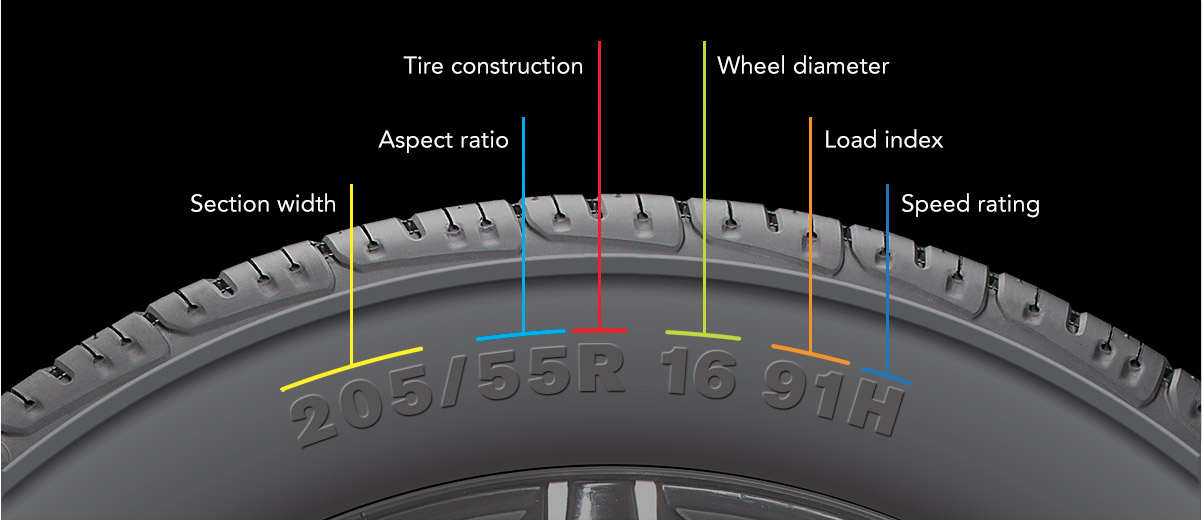One of the problems you can encounter when traveling by car is a punctured tire. Using a patch is a fairly common option to work around this issue.
Yet, if the hole is in a position like a tire wall, the problem becomes much more complicated because it is likely that the defensive position will not be patched.
So, how close to the sidewall can a tire be patched? A distance of 6 mm or more from the tire shoulder is required to fit a patch. In other words, if a crack is closer than 6mm, there’s almost nothing you can do about it!
Tire Sidewall OverviewFirst, let’s learn about sidewalls and how to identify them on your tires.
The wall is the rubber part from the outer edge of the rim to the road surface. This part also has the largest area, is the most flexible, and continuously deforms under loads when moving.
How Close To Sidewall Can A Tire Be Patched?As you know, the car’s wall is in a particular location, so it is pretty challenging to troubleshoot the hole here.
Manufacturers also recommend that you not choose the patch option if the spot is on the side of the vehicle or too close to this position. Then, how close to the sidewall can a tire be patched.
You cannot use the patch if the hole is close to the wheel with a gap of less than 6mm. In addition, you should note that if the hole is more significant than ¼ inch, the patch should not be used. In this case, if the patch is small, it cannot cover the hole, causing the wheel to deflate still when moving.
On the contrary, using a large patch can make the wheel more bulky, difficult to move, and unsafe.
Fix Sidewall DamageOther Related QuestionsTo better understand the problems that occur with the tires and how to overcome them effectively, you can refer to the following information.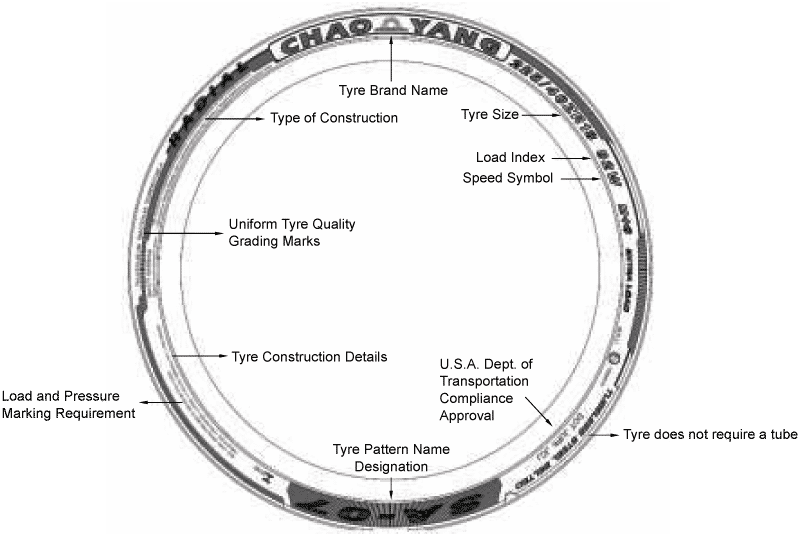
We’ve put together some frequently asked questions that may help answer your questions on this topic.
Plug a flat tire: Is it possible?People are often concerned about whether it is safe to plug or patch a flat tire.
These two options are pretty standard in repairing or overcoming the problem of flat tires caused by rolling nails or other sharp objects.
The manufacturer still recommends that you better replace the tire with a new one when there is a problem because repairing with a plug or patch when a flat one is not a safe solution.
Yet, the cost of new tires is not cheap, and if you have this problem often, it is a big problem. So, many drivers use a plug or patch when a wheel is punctured.
There is a limit to the number of nails or patches on a product. You can use this option to temporarily fix the problem if you find a few small holes. If the wheel has many large holes or previous patches, it is best to replace it with a new one.
For a detailed guide, check out this video:
How close can a tire patch be to another patch?The gap between patches is also a topic that people are very interested in. When traveling on the road, you may encounter a flat one many times.
As you know, when the tires have had previous patches or punctures in close locations, it is better to replace them. In case
Can you patch a tire on the side of the road?In the case of a puncture on the tire side, the use of stickers is unlikely to have as much effect as you think.
The reason is that its wall adhesion is so thin that relatively few materials can adhere. More specifically, damage to the sidewall will seriously damage the structure of a wheel.
More specifically, damage to the sidewall will seriously damage the structure of a wheel.
The solution to this problem is to insert an extra tube inside the wheel to ensure that you can still turn the whole thing.
How fast can you drive on a patched tire?A patched one will not achieve the same speed and performance as it once was. Therefore, the optimal level you can expect from such a version will not be more than 85 mph. Of course, this is just the limit that many manufacturers recommend, but you should not overdo this limit.
Can you patch a tire with 2 nails in it?The answer is yes! It’s just that the gap between the two punctures is at least 16 inches, and you might seal them with two large patches.
According to many manufacturers, the maximum number of times performed is two times. If more than that, it’s time to get a new one.
ConclusionAs such, a puncture in the side of the vehicle is a unique location where patching is not an optimal solution in this case.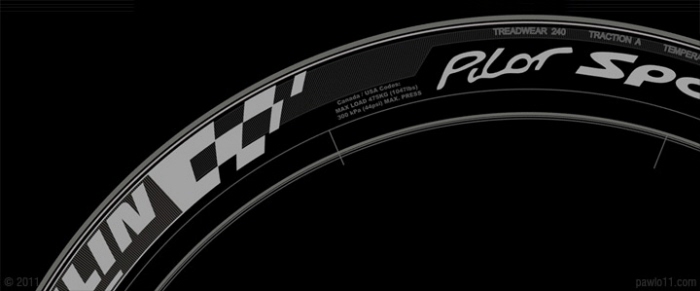 It would help if you changed to a new tire to ensure safety when traveling.
It would help if you changed to a new tire to ensure safety when traveling.
Thank you for following this post!
This post was last updated onWritten by Steven Schiller
Fact checked by Henry Speciale
According to the US National Transportation Safety Board, on average, 33,000 accidents are caused by tires yearly. These accidents can be avoided if motorists know what to do. Some people resort to patching to save their costly tires as a quick fix. But unbeknownst to many, the tire wall and shoulder are irreparable zones. Therefore, knowing how close to sidewall can a tire be patched is critical. It is required to spare a gap of 6 mm or more from the tire shoulder.
Read on to know the details when you need to fix your tire.
Table of Contents
There will be a tire patch fail when the patch is too close to the sidewall or shoulder, which is less than 6 mm.
You can’t patch a tire shoulder or patch a sidewall of a tire, and you need to replace the tire if the damage is too near the wall or directly on the tire shoulder.
Also, if the punctured hole covers more than ¼ inch, it’s no use attaching a patch. It won’t fully cover the hole, and the wheels will deflate when the car starts moving.
Why is the gap of 6mm from the sidewall important when patching your tire? Here’re what you should know about tire sidewall structure:

The sidewall accounts for the tires’ high performance and speed and holds the inner structure together, so it is critical to have your sidewall inspected from the inside out whenever you have a tire puncture.
So, make sure you know that:
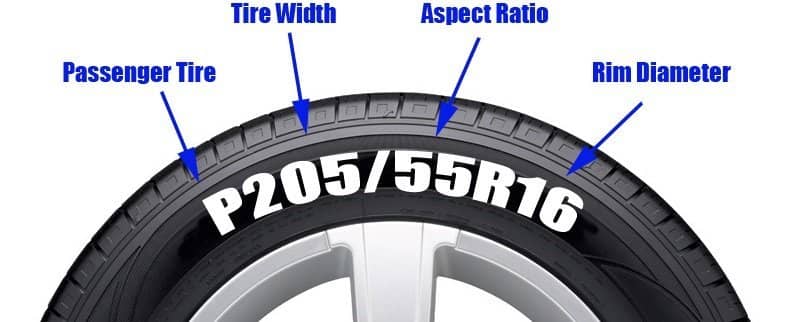 5-inch repairable zone.
5-inch repairable zone.So, when can a tire not be patched? Here’re the signs showing that you might need a tire replacement:
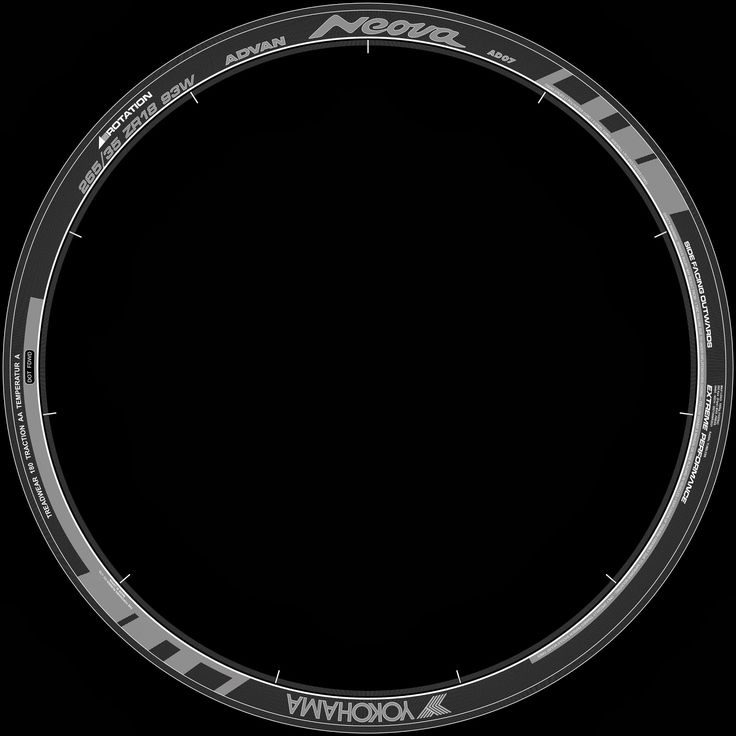
Step 1: First, check how close the puncture in sidewall of tire is to see if you can still give it a quick fix for your trip to the repair shop.
Step 2: If it’s beyond 6mm from the sidewall, you can apply a plug or a patch.
Plugging

Patching
With the frequency of use and exposure to harmful elements, it’s not uncommon to have our tires punctured. But we can follow these preventive measures to lengthen their tread life.
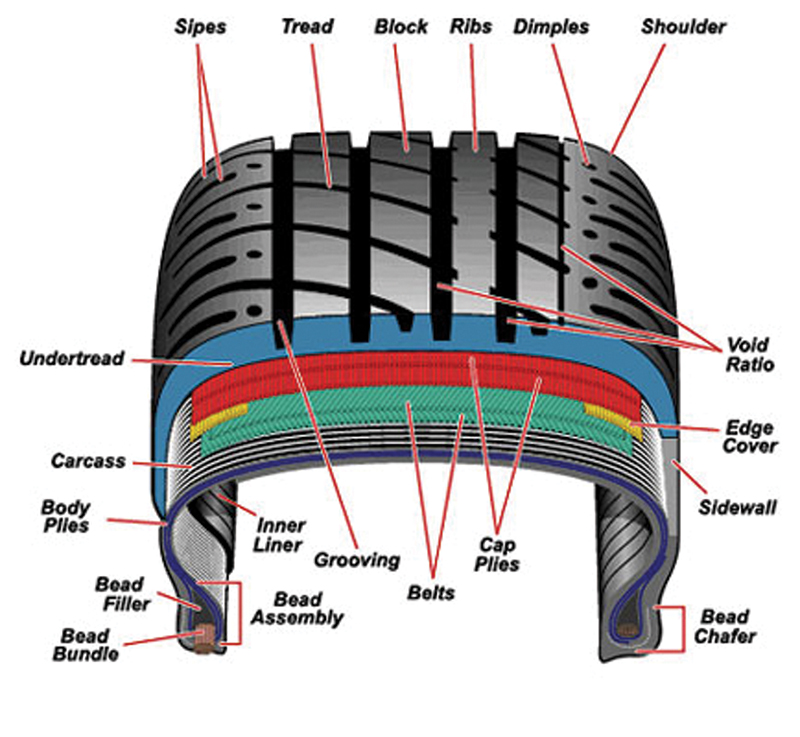
How long can you drive on a patched tire?
So long as the installation was done well, it can last for almost 25,000 miles, which is typically from seven to ten years or until its tread life is reached.
How close can a tire patch be to another patch?
You’ll find that a nail in sidewall of tire repairable up to a certain degree. You can patch a tire with 2 nails in it. This is possible as long as the gap between the two punctures is not less than 16 inches and not more than 2 times.
Can you patch a tire on the side of the road?
Yes, you can. Park your vehicle on the side of the road or shoulder, which is specifically reserved for road emergencies.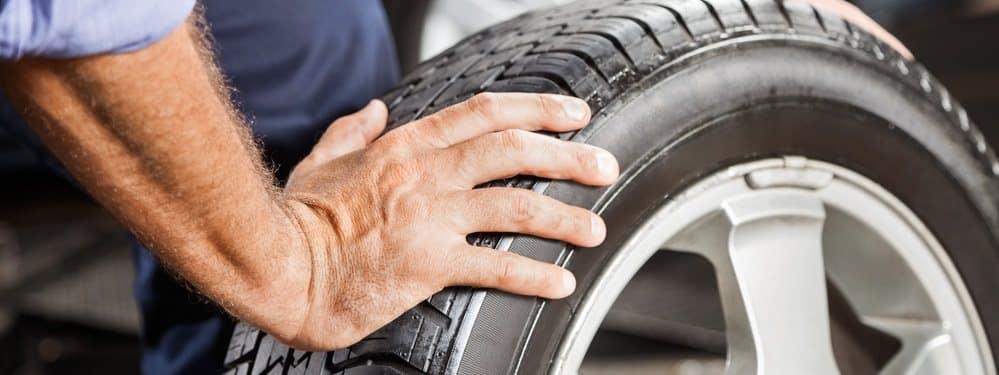 I can get my tire patched for free when I have tire sidewall repair products in my car, should the inevitable happen.
I can get my tire patched for free when I have tire sidewall repair products in my car, should the inevitable happen.
When you plug a tire sidewall, keep a safe margin of 6 mm and above to avoid damaging the tire. A temporary “quick fix” plug helps at least to get your vehicle to the nearest auto repair shop safely.
Can you drive on a damaged sidewall?
No, it is not advisable as it could lead to a blowout. Not only is it dangerous to drive, you can also get a fine for driving on a damaged sidewall and gain penalty points on your driver’s license.
Can’t you patch a tire shoulder?
No, you shouldn’t, as it is an irreparable area. If you do, it will just be a temporary fix that could endanger lives inside the vehicle.
With frequent driving and the countless revolutions a wheel makes, it’s no longer a matter of “if” but a question of “when” will a flat tire, or blowout happen.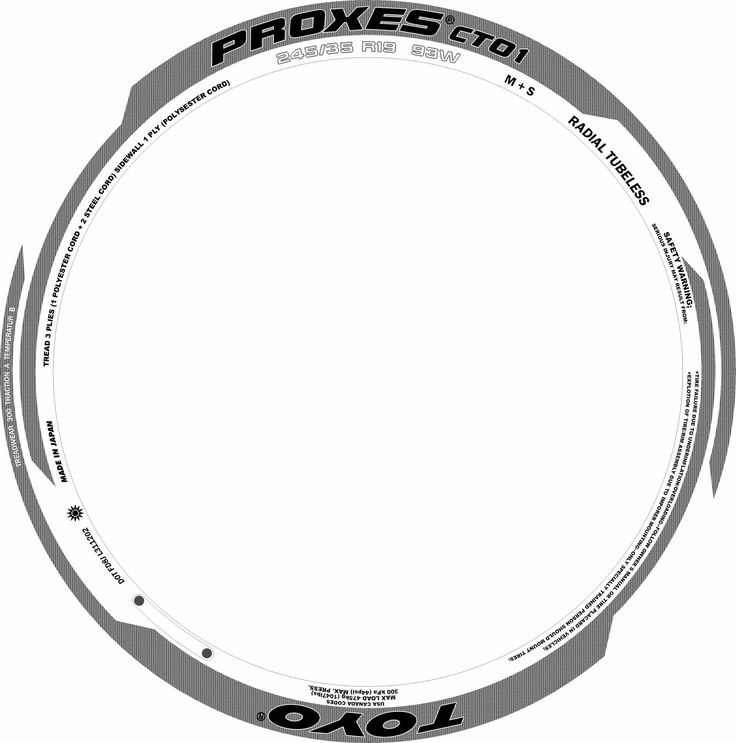 So being knowledgeable about the essentials of tire care and repair is a must.
So being knowledgeable about the essentials of tire care and repair is a must.
Knowing how close to sidewall can a tire be patched should help us exercise safety measures and get professional help for our tire’s optimum health. We can enjoy our tires’ maximum benefits if we take good care of them.
Read next:
I'm Henry, the content writer for PPMC Transport. We build our site entirely on experience and extensive market and customer research. My goal is to create a trusted platform where people can go to determine what is best for their vehicles in terms of safety and convenience. Keep an eye out for our useful guide!
- Speciale Henry
90,000 here are you yourself (and you can’t) fix it yourself - the magazine drivingLADA
UAZ
KIA
Hyundai
Renault
Toyota
Volkswagen
Nissan
NSAN
-BenzMitsubishi
Mazda
Ford
All brands
Most often, we ourselves are to blame for the fact that tires become unusable. But this can be avoided.
But this can be avoided.
Related materials
You have never seen such tires: even the police were surprised
In the process of using a tire, a variety of damages can occur, most of which are the fault of the driver. As a result, rubber is wasted, and since the law prohibits the use of different tire models on the same axle, you have to spend money on replacing the second tire.
The most common damage is puncture . This is the most harmless type of damage, but only if you notice it in time and repair it right away. It is absolutely impossible to drive on a flat tire, even a couple of meters! The damage caused by running on a flat tire or with low pressure is catastrophic. This causes the sidewalls to deform more than they should, which causes the tire to overheat, delaminate, and the carcass becomes unusable due to broken cords. As a result, the tire will have to be thrown away. In addition, the edge of the rim can also be damaged.
Punctures are of two types: with and without cord damage. To determine this, it is necessary to remove what pierced it. If the edges of the puncture tightly converge, then the cord is not damaged and it will be possible to repair the tire without removing it from the disk. Otherwise, if the edges do not converge, you will have to disassemble the wheel and make repairs with strengthening the frame from the inside. Alternatively, in the field and in the absence of a spare wheel, such a puncture can be repaired without removing the tire from the rim, after which you can carefully drive to a tire fitting or garage and make a full repair.
Related materials
Is it possible to pump up a wheel without a compressor - the experiment "Behind the wheel"
When repairing, the puncture site should be cleaned and marked. Further, it all depends on what kind of repair kit you have - as a rule, instructions are attached to them. There are sealants that are poured into the tire through the nipple, after which the wheel turns with the puncture down and the substance seals the hole.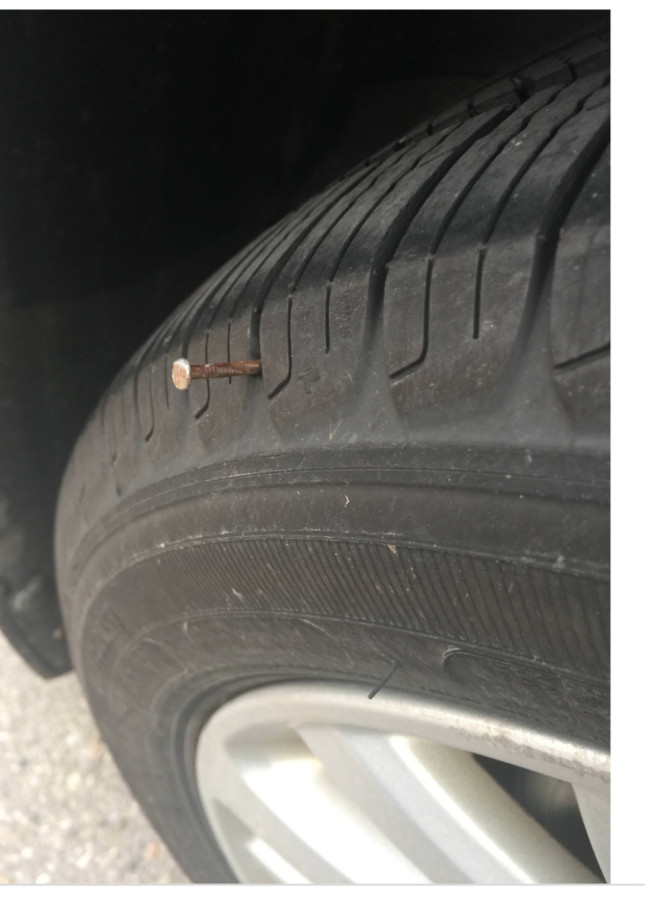 Repair using a tourniquet or insert is somewhat more complicated, but also more durable: the edges of the hole are polished with a special tool, after which the tourniquet treated with a special compound must be inserted into the tire through a puncture with a special awl, pulled out (not completely) out and cut flush with the surface.
Repair using a tourniquet or insert is somewhat more complicated, but also more durable: the edges of the hole are polished with a special tool, after which the tourniquet treated with a special compound must be inserted into the tire through a puncture with a special awl, pulled out (not completely) out and cut flush with the surface.
In case of damage to the cord due to a puncture, the tire must be removed from the rim in order to install a reinforced patch with an additional cord on its inner surface. One of the sides of such patches has an adhesive layer that promotes cold vulcanization. After such a repair, wheel balancing will be required. To seal punctures from the inside, patches in the form of a mushroom are also used, with a leg that goes into the puncture. Such patches are also covered with a special adhesive for cold vulcanization.
Cuts or holes , unlike punctures, are not repairable, as they violate the integrity of the frame, which can no longer be strengthened.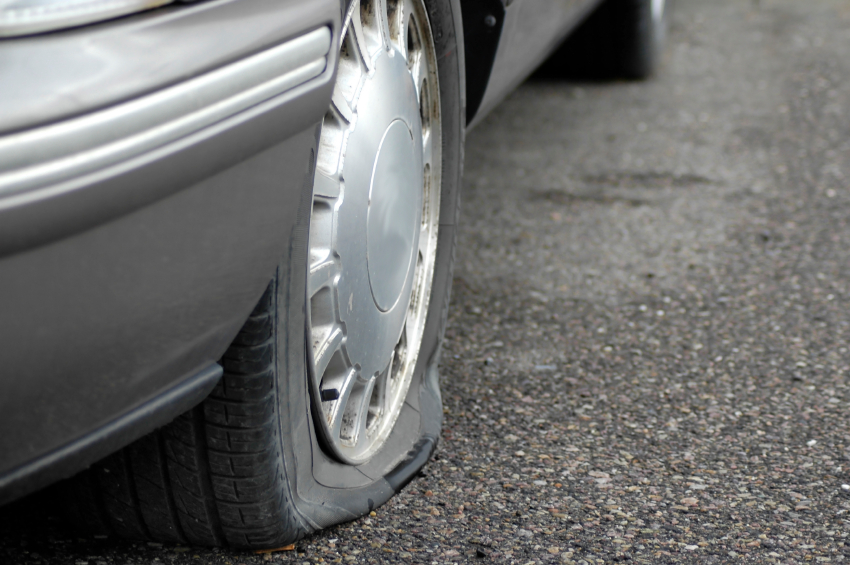 In addition, breakdowns are always sudden and occur on the go: the tire abruptly loses pressure and before the car comes to a complete stop it has time to make several revolutions “on the rims”, which breaks the cord and destroys the layers. It is not recommended to use such a weakened tire, even if it was possible to repair and strengthen the place of the rupture or cut, in the future.
In addition, breakdowns are always sudden and occur on the go: the tire abruptly loses pressure and before the car comes to a complete stop it has time to make several revolutions “on the rims”, which breaks the cord and destroys the layers. It is not recommended to use such a weakened tire, even if it was possible to repair and strengthen the place of the rupture or cut, in the future.
Related materials
8 tire storage rules - do you follow them all?
Incorrect storage of tires can cause cracks . The danger of such damage is that moisture enters the cord through cracks, which renders the frame unusable. In addition, air can escape through cracks. Unfortunately, cracks are not repairable, and tires with them will not last long: sooner or later they will deform, become covered with swellings due to rusted and torn cord or because of driving with pressure below the recommended one.
Blisters or bulges can appear on a tire for a variety of reasons - it always happens due to a broken cord or delamination in the carcass.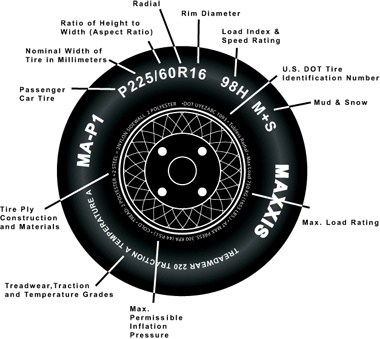 In the first case, an obstacle was hit and the impact broke the cord or the cord was cut through with a sharp object. In the second case, there is no damage on or near the hernia, which means that it appeared either due to a factory defect, or due to frequent driving with pressure below the recommended one. The danger of hernias is that they can explode at any moment and provoke a skid, which will lead to an accident. If there is nothing to replace a tire with a hernia, then it is better to rearrange it to the rear axle and drive very carefully. Like cracks, a hernia cannot be repaired. Sometimes small blisters resulting from impacts or cuts are reinforced with reinforced patches, but there is no guarantee that the tire will not explode. Therefore, tires with hernias are recommended to be replaced immediately.
In the first case, an obstacle was hit and the impact broke the cord or the cord was cut through with a sharp object. In the second case, there is no damage on or near the hernia, which means that it appeared either due to a factory defect, or due to frequent driving with pressure below the recommended one. The danger of hernias is that they can explode at any moment and provoke a skid, which will lead to an accident. If there is nothing to replace a tire with a hernia, then it is better to rearrange it to the rear axle and drive very carefully. Like cracks, a hernia cannot be repaired. Sometimes small blisters resulting from impacts or cuts are reinforced with reinforced patches, but there is no guarantee that the tire will not explode. Therefore, tires with hernias are recommended to be replaced immediately.
Related materials
Tire blackening - 6 ways to polish. Inexpensive!
Tire sidewalls can be damaged by rubbing against curbs or the asphalt edge when pulling over.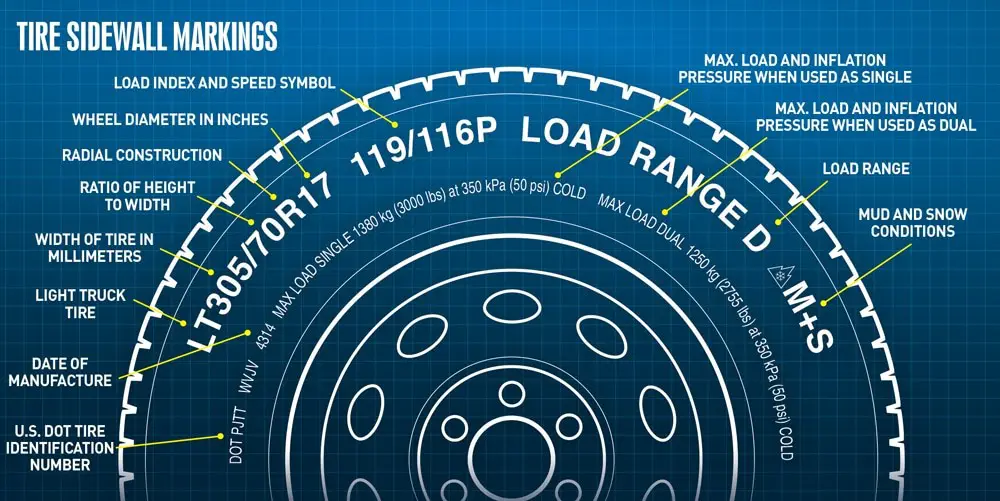 If you are prone to such a driving style, then it is recommended to inspect the inner and outer sidewalls from time to time and, if abrasion is found, swap the wheels in order to prevent the cord from being exposed - the rubber thickness on the sidewalls is small (1.5–3 mm), and it can be rubbed to the frame very quickly.
If you are prone to such a driving style, then it is recommended to inspect the inner and outer sidewalls from time to time and, if abrasion is found, swap the wheels in order to prevent the cord from being exposed - the rubber thickness on the sidewalls is small (1.5–3 mm), and it can be rubbed to the frame very quickly.
Often the cause of tire damage can be poor-quality tire fitting , during which the bead ring was damaged. In this case, the tire loses its geometry and “sits” crookedly on the disk - it writes out “eights” during rotation, and lateral vibration appears during the ride. It is impossible to repair such a tire - you need to replace it with a serviceable one as soon as possible before it damages the suspension: rods, hubs and bearings.
You can find out whether you are using tires correctly and what invisible damage they have received by the characteristic wear of the tread, the varieties of which are collected in the table for convenience:
Double side shoulder wear
Driving with lower than recommended tire pressure.
Inflate the tires to the pressure recommended by the automaker (a plate with recommendations is attached in the driver's door opening) and find the cause of the fall: puncture, cracks, hernia, nipple, rust on the disc rim in the place where the tire fits, etc.
Center wear
Tire pressure too high.
Reduce the pressure to the recommended (indicated on the tablet in the driver's doorway)
In the form of rings and furrows
can be found on trailers or rear wheels of picaps and vans due to vibrations and vibrations and vibrations due bouncing at high speeds.
Changing wheels on a loaded axle to equalize wear, driving with a heavier load.
Chipped wear with cuts
Frequent wheel spin on rocky surfaces.
Move the wheels to a non-driving axle, use the gas pedal more carefully when starting to move.
Photo: Petr Urbanek / Unsplash
Our new video
3 interesting features of the updated Vesta. And 2 more - in the future
Updated Lada Vesta NG: what is the package?
The Chinese SUV is better than the "Japanese": the first test and video
Like the article? Subscribe and you will always be in the know!
Driving in Zen
News smi2.ru
Yellow and red marks on tires.
What do they mean:
1. Multi-colored dots, triangles, which are applied to the sidewalls of car tires?
2. Colored stripes on their tread?
The answer to this curious question is quite simple. Circles (dots, triangles) of red, yellow (there are also blue or even white designations) are nothing more than balancing marks and they are intended to ensure the most accurate balancing of an automobile wheel.
1. Yellow dot or yellow triangle.
This yellow dot (or yellow triangle), which is applied to the sidewall of a car tire - is the lightest part of the tire , which is determined by the static balancing method.
If the rim has a distinguishable marking "L" - this is the lightest place on the rim, then during installation it is necessary to place the lightest place on the rim ("L") on the opposite side of the light spot on the car tire, i.e. the yellow dot.
Note:
1. "L" is the lightest spot on the rim.
2. On rims of different manufacturing companies, the "L" point can be indicated by different colored dots: green, blue, as well as other colors.
If there is no distinguishable “L” marking or colored dots on the rim, then in this case, during installation, it is necessary to combine the heaviest place on the rim, and this will be the place where the inflation valve is located with the lightest place on the car tire, then there is a yellow dot.
2. Red dot or red triangle.
This designation indicates the maximum radial force deflection (RFV) point, and is therefore the most rigid and consequently heaviest part of the sidewall of an automobile tire. This point, when mounting the wheel, must necessarily be aligned with the “L” mark - this is the lightest place on the rim
The red dot (triangle), as a rule, is applied to car tires that are supplied in the original (primary) configuration of the car. Its purpose is the greatest power inhomogeneity. In other words, this is a kind of heterogeneity, the occurrence of which can be closely related to various kinds of compounds of various layers of a car tire (belt layers, carcass layer, and so on).
The rims that are supplied in the original, original equipment of the car are also marked with the minimum distance from the center of the rim to the rim (a white dot or another mark is applied). During the assembly of the car wheel at the car factory, the red dot of the tire is aligned with this mark on the wheel rim. This is done in order to reduce the maximum power inhomogeneity, to ensure a balanced power characteristic of the wheel assembly.
During the assembly of the car wheel at the car factory, the red dot of the tire is aligned with this mark on the wheel rim. This is done in order to reduce the maximum power inhomogeneity, to ensure a balanced power characteristic of the wheel assembly.
During normal wheel mounting, experts are advised not to pay attention to the presence of a red dot, but to be guided only by the yellow dot while aligning it with the inflation valve.
3. White dot or white circle.
In the case of some OE car tires, this color coding tells us the point of minimum radial force deflection (RFV), which is the most flexible part of the car tire sidewall wall. In this case, the white dot or circle must be aligned 180° from the 'L' mark, or the 'top' mark on the wheel.
4. Colorful lines.
Multi-colored lines that are printed on car tire treads are necessary to distinguish these tires that are in a pile, for example, in a store or in a warehouse.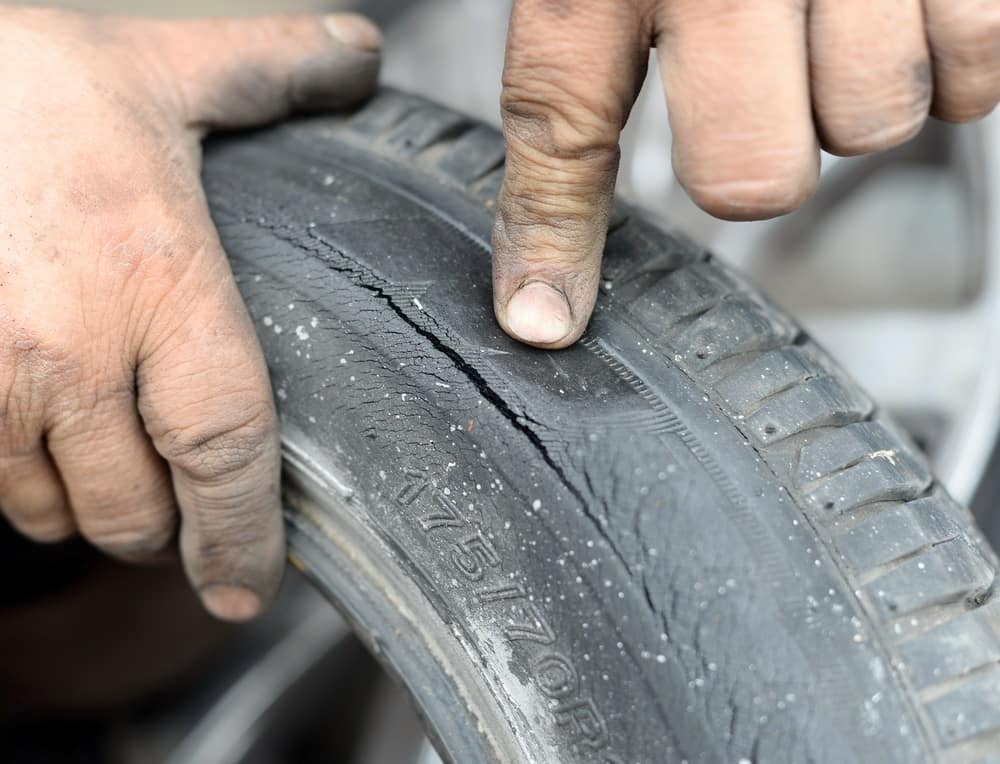
Each tire size has its own unique color, arrangement and thickness of these colored stripes. The stripes can sometimes vary depending on the state of the manufacturing company, the specification and release date of car tires, and even on tires that have the same tread pattern and size.
According to foreign experts: colored lines serve as an indicator on the tire, which shows that this tire has been run-in.
5. White stamp with a number on a car tire.
A white stamp with a number on a car tire indicates the number of the inspector who carried out the final inspection of the car tire at the factory. In addition, this digital marking does not carry any information load.
Car owners who purchase car tires in retail stores are advised to first of all pay attention to the corresponding inscriptions that are present on the sidewall of the wheel tire: size, speed symbol, load index, country of the manufacturer, tread pattern, specification, etc.